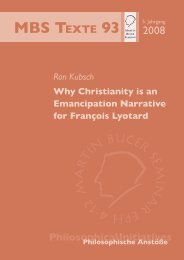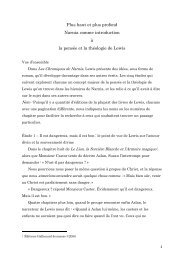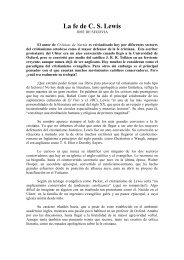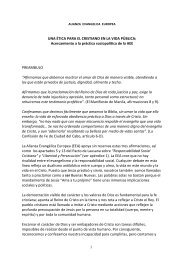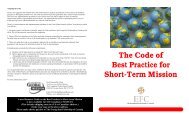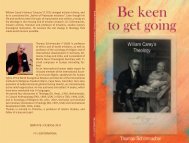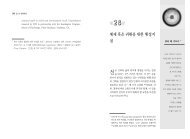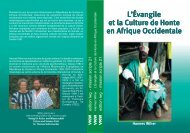WHEN YOU CROSS CULTURES - World Evangelical Alliance
WHEN YOU CROSS CULTURES - World Evangelical Alliance
WHEN YOU CROSS CULTURES - World Evangelical Alliance
You also want an ePaper? Increase the reach of your titles
YUMPU automatically turns print PDFs into web optimized ePapers that Google loves.
48 <strong>WHEN</strong> <strong>YOU</strong> <strong>CROSS</strong> <strong>CULTURES</strong><br />
BIBLICAL FREEDOM<br />
The missionary and the group believe they have Scriptural support for<br />
this type of ministry. The Psalms abound with commands to praise the Lord<br />
with vocal and instrumental music. 11 David exemplifies the use of the arts to<br />
glorify God. He composed psalms which were lyrics for hymns. Psalm 57 for<br />
example was sung to the Hebrew tune “Altaschith”. He also danced before the<br />
Lord and, with all the people, shouted with joy and the sound of trumpets was<br />
heard (2 Samuel 6:14,15).<br />
A warning, however, is implied in Genesis 4:21. God destroyed the<br />
Canaanite civilisation because, among other reasons, they used their cultural<br />
achievements to defy God instead of being dedicated to God’s glory.<br />
In the New Testament, the apostle Paul was willing to adapt, and<br />
expressed his freedom to experiment in reaching specific people groups<br />
(1 Corinthians 9:19-23). As mentioned earlier, he also quoted a Cretan and a<br />
Cilician poet (Acts 17:28; Titus 1:12).<br />
AN ASSESSMENT OF JAVANESE CONTEXTUALISATION<br />
In Java’s history, some missionaries to the Javanese have freely utilised<br />
Javanese cultural forms to spread their faith.<br />
Christian missionaries in general have almost unanimously rejected the<br />
use of cultural forms. The few notable exceptions that did succeed in penetrating<br />
Javanese culture with the Gospel have been largely ignored. 12<br />
One obvious danger of a contextualised ministry is syncretism. The<br />
Javanese tendency to assimilate mutually contradictory beliefs is seen in their<br />
history. To their ancient animism, they added Buddhism, Hinduism and Islam<br />
before Christianity arrived.<br />
The questions are: how can new believers in Christ be kept from adding<br />
just “one more layer” to their syncretistic beliefs, especially when music and<br />
drama forms from these other layers are being used to present the Gospel? Is it<br />
right to use Aji Saka to represent Christ since he was probably a Hindu Brahmin?<br />
The answers lie in guarding themselves from this danger by being saturated in<br />
God’s Word. Every concept must be evaluated in the light of Scripture.<br />
Another danger is Satanic influence. Javanese arts are heavily influenced<br />
by evil spirits. Many actors, dancers and musicians make pilgrimages to seek<br />
supernatural assistance at the graves of famous performers. They also ask dukun13 11 Psalm 33:1-3; 92:1-3; 98:4-6; 149:1-5<br />
12 Avery T. Willis (1977), “Indonesian Revival - Wh y Two Million Came to Christ”, William Carey Library. C. Guillot, Kiai Sadrach<br />
(1981), “Riwayat Kristenisasi di Jawa”, Jakarta: Grafiti Pers..For failure to contextualise, see Dr Hendrick Kraemer (1958), “From<br />
Mission Field to Independent Church”, The Hague: Boekencentrum.<br />
13 Animist witch doctor, capable of performing most of the practices forbidden in Deuteronomy 18:10,11.




